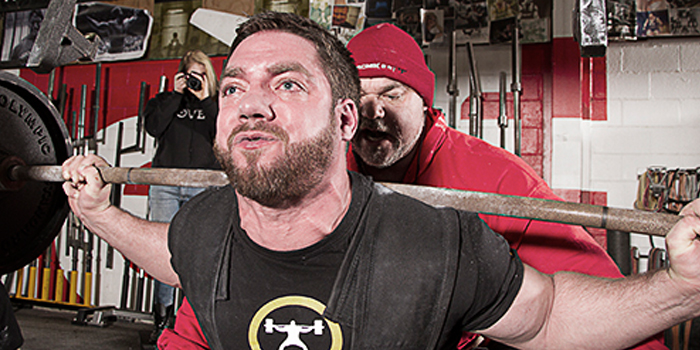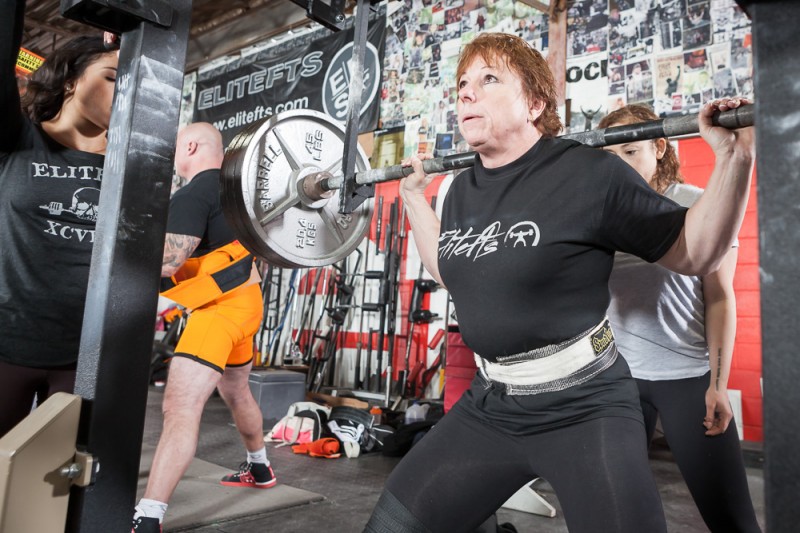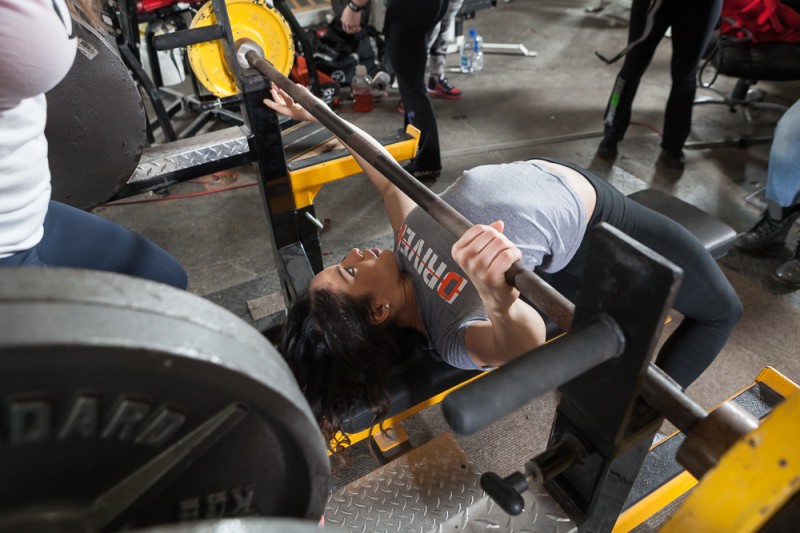
This title might initially be confusing for some, while others probably knew exactly what I was going to talk about before even opening the article. Something I’ve noticed as more time goes on is that there are a lot of lifters and coaches that know good cues, but don’t know how to apply them to a specific lifter. Believe it or not, there is such a thing as “too much of a good thing”, and over-applying a cue when it’s not needed can really jack up a lifter’s technique. This is why it’s so important as a coach or training partner not to just regurgitate cues, but to know why and when they’re needed.
John Carroll University ROTC Seminar — Powerlifting as Military Training
Again, I’m not saying these are always bad cues, but they have to be applied in the right context. These have all at one point or another screwed up my technique when they’ve been misapplied, and I know they’ve done the same to others as well.
“Sit Back”
Primary Application: The Squat
Goals of the Cue:
- To hinge the hips back.
- Keep the knees from going too far forward.
- Utilize the glutes and hamstrings.
- In the case of an equipped lifter, utilize the support of the suit during a squat.
When It Works Best:
- For newer lifters that need to learn how to break at their hips to initiate a movement.
- For those that need to break the habit of sinking their weight on their toes during a squat and putting too much pressure on their knees.
- For equipped lifters or lifters with a hip-dominant (typically wider stance) squat.
When It Screws Up Your Lifting:
- For raw squatters that already sit back to initiate their squat, sitting back even further can pitch them forward and turn the squat into a good morning (this is pretty common).
- Overly avoiding having the knees forward in the squat can also cause the lifter to kick the hips back too far on the way up, turning the squat into a good morning as well.
- For some equipped lifters, thinking, “spread the floor/open the knees” instead of “sit back” will still accomplish the goal of keeping the shins vertical. This is a matter of trying to see what works best.
“Tuck Your Elbows”
Primary Application: The Bench Press
Goals of the Cue:
- Keep the elbows in line under the wrists.
- Prevent strain on the pecs/shoulders from opening the elbows too wide.
- Engage the lats.
- Allow a shirted bencher to gain more range-of-motion in the shirt (to touch lower).
When It Works Best:
- For newer lifters who are used to a “bodybuilding-style” bench press with their elbows very wide.
- Shirted benchers (for the reason stated above).
- For those that don’t understand how to engage their lats during their bench press setup.
When It Screws Up Your Lifting:
- Raw and equipped benchers who over-tuck their elbows will have problems. This can cause the wrists to pitch too far backward, causing lockout problems in a raw bencher, and “dumping the weight” in an equipped bencher (this is a very common one).
- Remember, the ideal elbow position for a raw bencher is having the elbows directly under the wrists.
“Arch”
Primary Application: The Squat
Goals of the Cue:
- Prevent rounding of the back during setup and execution of the squat.
- Keep weight over center of gravity (even further back in an equipped lifter who is using the suit and straps to help support the weight of the barbell during the squat).
When It Works Best:
- When a lifter is naturally rounded and you’re trying to emphasize the opposite of this problem.
- I personally think there are better cues to fulfill the same purpose as above.
When It Screws Up Your Lifting:
- When a lifter over-arches and loses a tight, stacked, neutral spine position.
- When it causes the lifter to be unable to keep their trunk and abs tight.
- When it doesn’t allow the lifter to engage their glutes.
- I find that, for most lifters, over-emphasizing “arching” leads to unstable positions.
“Abs Tight”
Primary Application: The Squat and Deadlift
Goals of the Cue:
- Keep stability in the trunk muscles.
- Protect the lower back.
- Maintain a strong base in vulnerable positions like in the hole of a squat.
When It Works Best:
- As a reminder for lifters to engage their “abs/trunk/core” and get tight before beginning their lift.
- As a reminder to take diaphragmatic breath and to lock your ribcage down and abs tight against belt.
When It Screws Up Your Lifting:
- When the lifter only focuses on pushing the front of their abs out against the belt versus filling their belt 360 degrees (using the complete trunk).
- When the lifter only thinks about keeping their abs tight and doesn’t engage their glutes.
- Since talking with Cal Dietz at the RPR Certification, and seeing how Steve Goggins has talked about his squat walkouts, I actually teach my lifters to engage their glutes tight first, then their abs/trunk. If the hips and glutes aren’t locked and tight before a squat begins, the lifter is in a vulnerable and unstable position, even with their abs tight.
“Don’t Be A Pussy”
Primary Application: Training in Groups
When It Works Best:
Okay, I kind of put this one in here tongue-in-cheek, but I think it’s worth mentioning. For a lot of lifters (especially those who haven’t trained in a group before), they do need pushed beyond what they perceive to be their limits, and learn how to strain through lifts and attack lifts even when they feel fear. In this case, some good kicks in the ass from training partners are needed, and can take a lifter to the next level. For many reading this, you probably do need to hear that from your training partners, and often.
When It Screws Up Your Lifting:
On the other side of things, however (and I may go into this more in-depth in a separate article), I see a recurring attitude in the group training environment where lifters tend to do things because they want to prove they’re tough, versus because it’ll help them on meet day. While sometimes lifters need pushed, sometimes (particularly ones who have a tendency to burn themselves out) they instead need encouraged to stick to the program and swallow their pride. Frankly, you shouldn’t give a shit about being a tough guy in training unless it actually helps produce the best performance on the platform (if competitive lifting is your main goal, that is). Just something I think is important to keep in mind, when it’s easy for egos to run wild in the group setting.
These are just a few cues that can both benefit and hurt different lifters at different times. If there’s one thing I’d like you to take away from this article, it’s that when coaching others, you need to understand the context of the instructions you’re giving. Train hard, but train smart and always be seeking to understand the why.













I competed for a few years and being out of school and a super tall skinny kid learning everything from the internet it was a challenge.
After constantly reading about "tucked elbows" and "arching as hard as humanly possible" and "back, back, back" for years... I finally realized my elbows hurt so freaking bad because I was benching like an equipped bencher should. My back hurt cause I was arching so hard my abs didn't work and it put my back in constant hyper extension.. and I was sitting back so far that I was doing goodmornings. In fact, that's still the only way I can squat anything.
Elitefts needs a link at the top of the page to a graphic that shows ideal technique for raw vs geared so all the hopefuls like me reading about westside and training alone and raw don't go through that some stuff.